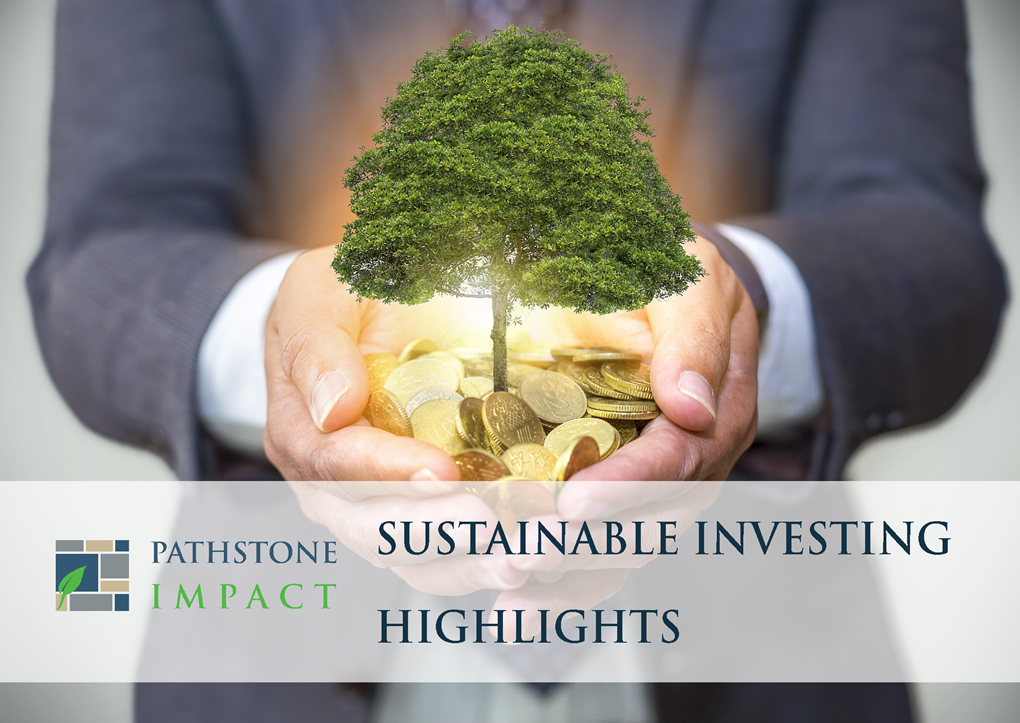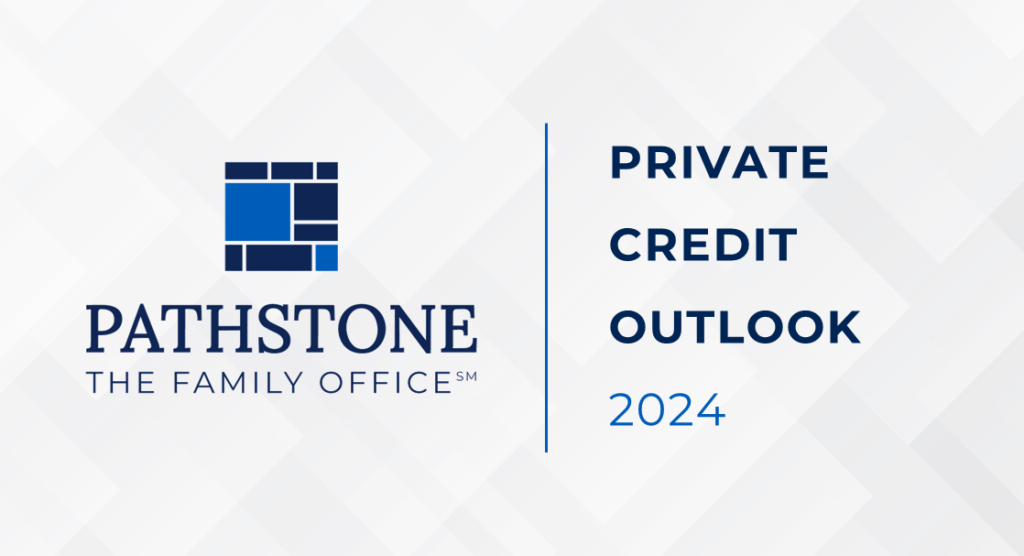Vatican’s Call for Fossil Fuel Divestment a Bellwether for ESG Investment
The divestment movement continues to gain traction with faith leaders, higher education, and institutional and individual investors as a useful tool for addressing the impact of climate change. It is often combined with investments related to renewable energy.
Recently, the Vatican, under the leadership of Pope Francis, has urged 1.2 billion Catholics around the world to divest from companies with fossil fuel exposure. The call for divestment coincides with the “fifth anniversary of Pope Francis’ landmark encyclical ‘Laudato Si’ (Praised Be) on the need to protect nature, life, and defenseless people.” The call also outlines practical steps for achieving goals outlined within the encyclical, including divestment from companies with social and environmental controversies, human rights violations, and a focus on fossil fuels.
George Washington University, The University of California, and Cornell University are the latest higher education institutions to move towards becoming fossil fuel free. The University of California (“UC”) has sold approximately $1 billion worth of fossil fuel assets from its working capital, endowments, and pension fund. According to Jagdeep Singh Bachher, UC Chief Investment Officer, “$125 billion of UC assets are fossil-free and proceeds from the $1 billion in sales of fossil fuel assets will be used to help fund renewable energy projects.” The Cornell University board of trustees voted on May 22, 2020, to institute an immediate moratorium on new fossil fuel investments in its $6.9 billion endowments. The George Washington University board of trustees also recently voted to commit towards divesting their portfolio’s fossil fuel assets. The boards’ decisions of these universities took into account that climate change remains an existential threat to humanity. These votes followed a series of student and faculty protests that called on the leadership of Cornell, Stanford, and George Washington University to refrain from investing in companies with fossil fuel reserves.
The Minnesota State Board of Investment has also added its name to a list of institutional investors divesting from certain publicly traded companies with fossil fuel exposure. A resolution approved by the Minnesota State Board of Investment states that the Minnesota State Board would divest from publicly traded companies “that derive 25% or more of their revenues from the extraction and production of thermal coal within the $65.2 billion of defined benefit plan assets managed by the board.”
Pathstone has several clients who are concerned with the environment and climate change. We have helped these clients advance their mission of protecting the environment through divestment from exposure to fossil fuel reserves, while at the same time facilitating a reinvestment within climate solutions that include renewable energy. As we integrate environmental, social, and governance sensibilities into our investment process, we are also helping many clients better align their investment portfolios with their specific values.
The Lockdown of 2020 and Path Towards Reopening
The lockdown of 2020 has pushed businesses and governments to rethink strategies and models for doing business, resulting in structural changes and support packages with a scope that has not been seen since the Great Depression. While the worst of the lockdown may be over, the path towards reopening will need to be “sequential and restrained.” It will be determined by how well countries can flatten their COVID-19 curve, develop a vaccine, availability of medical solutions for this health crisis, and whether individuals can change their behavior.
According to Christine Lagarde, the President of the European Central Bank and former Director of the International Monetary Fund, reopening will be uneven as different countries flatten their curves at different times, partly depending on each country’s approach and its relative effectiveness. For instance, South Korea’s reopening will differ from that of Italy, as the countries had rising case numbers and subsequently flattened their COVID-19 curves at different points in time.
Vaccine availability may prove to be a key factor in determining how fast countries will open after months of lockdown. While countries have sought to flatten their curve, the countries that can produce and distribute a vaccine may be able to open sooner than those that do not have adequate resources to fund COVID-19 vaccines. Emerging market economies may have difficulty accessing a vaccine since many countries within emerging markets lack a sophisticated healthcare system that includes an institution focused on vaccine production or distribution. In addition, countries within emerging markets are often already experiencing a budget deficit that might be linked to a decline in the price of a key commodity, a steep decline in exports, or an increase in capital flight from the country.
Countries with robust medical solutions should be able to rebound more quickly from the lockdown of 2020, while those that lack robust solutions may lag. COVID-19 has heightened awareness of the fragility of the global healthcare sector. According to Gita Gopinath, the Chief Economist Czar of the International Monetary Fund, “…a priority is to manage health risks even as countries reopen. This requires continuing to build health capacity, widespread testing, tracing, isolation, and practicing social distancing (and wearing masks). These measures help contain the spread of the virus, reassure the public that new outbreaks can be dealt with in an orderly fashion, and minimize economic disruptions. The international community must further expand financial assistance and expertise to countries with limited healthcare capacity. More needs to be done to ensure adequate and affordable production and distribution of vaccines and treatments when they become available.”
The lockdown of 2020 has altered how people work and interact. Constant reminders and clear messaging from leaders can help. Countries and regions that effectively communicate the benefits of social distancing, wearing a mask and simple health hygiene, such as hand-washing, are expected to reopen and rebound from the lockdown at a faster pace.
Leadership in the Face of Crisis
Once the global lockdown ends, history will judge world leaders in business and politics based on how effectively they handled the COVID-19 pandemic. It is important to consider what society may learn from global leaders and their leadership styles during the COVID-19 crisis. A Harvard Business Review article compared countries led by male and female leaders during the lockdown and found that women-led countries had fewer COVID-19 cases and fewer deaths than male-led countries, even as it remains a challenge for women to break through the political and corporate glass ceiling. Pragmatism, the ability to listen and communicate, and humility are the vital attributes that are thought to have provided a benefit within women-led countries, perhaps resulting in fewer COVID-19 cases and death.
It is important not to extrapolate the recent success of a small sample of world leaders as they deal with a global health crisis. However, the recent success of female leaders is noteworthy. Women-led countries of New Zealand, Germany, Taiwan, Iceland, Denmark, and Finland were able to adopt pragmatic policy interventions while prioritizing the health and safety of their citizens over short-term economic growth. These women leaders were able to utilize a leadership approach that delegated power to state and local authority to handle the crisis while providing guidance and resources at the national level. The collective leadership approach in handling the crisis is thought to have amplified the strengths of these women, rather than their weaknesses.
Apart from adopting pragmatic policy interventions in handling the lockdown crisis, these leaders communicated effectively with scientific experts with the knowledge and credentials to understand the COVID-19 virus. Recognizing that their own political strength and rhetoric would not eradicate the virus, they paved the way for experts to do most of the talking while working with opposition leaders to provide a needed economic stimulus to address unemployment and a shortage of personal protective equipment (PPE).
Female leaders in some of these countries were more humble, putting the health and well-being of their citizens first, regardless of their political or religious affiliation, and regardless of whether these individuals would help their personal political ambitions or the short-term economic well-being of their country. According to a British Medical Journal op-ed article by Devi Sridhar, the Chair of Global Health at the University of Edinburgh Medical School, “No discipline has all the answers, and the only way to avoid ‘groupthink’ and blind spots is to ensure representatives with diverse backgrounds and expertise are at the table when major decisions are made.” Applying Sridhar’s lens, we might consider whether these female leaders were better able to “leave their egos at the door” and encourage different ways of thinking.
ESG Ratings, Risk, and Integration during COVID-19 Crisis
While environmental, social, and governance (“ESG”) ratings and integration have continued to gain more recognition as a tool to test companies’ risk during the lockdown of 2020, recent events and recent protests have highlighted the need for a more thoughtful and integrated ESG approach that pushes for social justice, solutions for climate change, and healthcare access. While meeting these needs, it is also important to consider how these metrics and tools can be standardized, allowing them to be more useful and effective.
A global focus on the social justice movement and protests around the world has caused companies and stakeholders to increase their focus on diversity (with a capital “D”) as a key component within ESG. Richard Samans, of the World Economic Forum, and Jane Nelson, Director of the Corporate Responsibility Initiative at Harvard Kennedy School, recently argued that “the substantial economic contraction triggered by the current global public health crisis is the latest example of the heightened materiality of ESG&D factors in our more interconnected and interdependent world.” The rationale behind their argument is that companies that include D across their ESG approach will have a greater opportunity to create long-term sustainable value for their shareholders and their other stakeholders.
As ESG integration continues to gain traction in the wake of the lockdown, studies by Marsh & McLennan find that the level of satisfaction employees have with regard to a company’s ESG readiness may help determine the company’s ability to attract future talent. The study, for example, cites that “Companies with high employee satisfaction and attractiveness to young talent have notably lower emissions intensities than their peers […] Some companies have been able to promote a culture of pride through their environmental or social performance, while others have had to deal with employee activism from staff unhappy about performance on climate change. Just as investors increasingly expect corporations to embrace the transition to a low-carbon economy, so do employees.”
As the world continues to wrestle with the lockdown of 2020, ESG experts believe that the lockdown could provide companies with an opportunity to strengthen their commitment to health services, which in turn can help improve their ESG metrics, make them more attractive for future employees, and potentially deliver a competitive advantage when the economic recovery gains momentum.
Addressing the challenge of ESG standardization, S&P Global Rating recently shared their view that “a single standardized disclosure framework to enhance comparability and consistency would facilitate credit analysis and ESG-focused analysis.” S&P Global Rating supports creating a core set of reliable ESG metrics that would provide a standardized minimum dataset. In their view, a general set of ESG key performance indicators (KPIs) would facilitate comparability across sectors for analysts and communication regarding risk with stakeholders.
Please see the PDF version of this article to read more




















